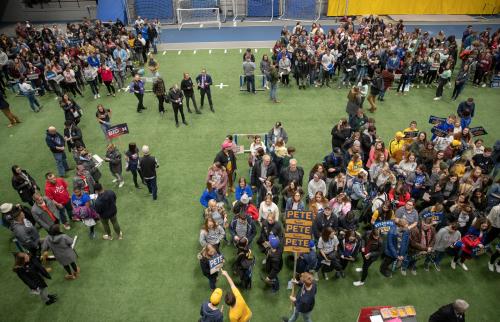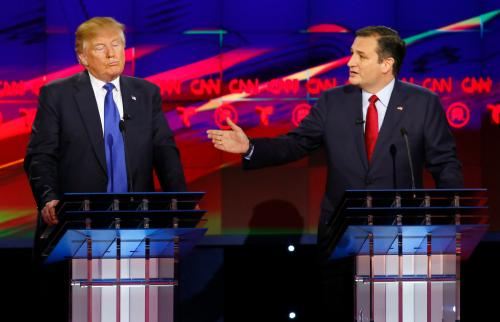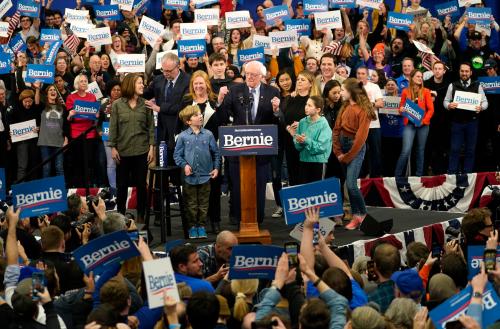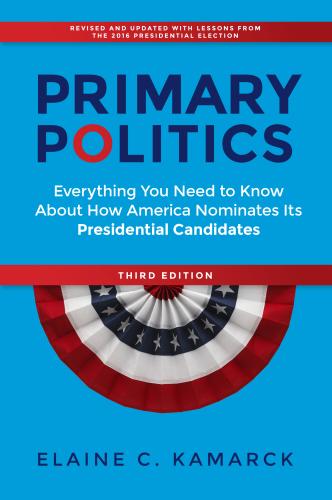On Monday night, February 3, 2020, Iowans will flock to school auditoriums, union halls, community centers and even a few private homes in 1,681 precincts across the state of Iowa to give us the first glimpse of how real voters feel about the race for the Democratic nomination for president.[1] Because they are unique in the modern American electoral system, a bit of confusion over how to interpret the results is understandable. For those seeking to understand the opening gambit of the race for the Democratic presidential nomination, the following is a short guide to the results and how to interpret them.
Understanding the results
Somewhere around 11:00 EST on February 3rd, the Iowa Democratic Party will announce three important numbers:
- The “first expression of presidential preference”
- The “final expression of presidential preference”
- The “state delegate equivalency”
The “first expression of preference” will be a count of the first vote Iowans take when they come into the precinct meeting. The precinct chairperson will count these cards and announce the results. The “first expression of preference” will most closely resemble what most Americans are used to—a simple tally of who the voters like the best.
Then the Iowans whose presidential candidate does not get 15% of the vote will be allowed to vote for their second choice—and here’s where the real fun begins. Voters for candidates who met the 15% threshold will have a minimum of 15 minutes to try and convince their neighbors that they should come and join their group. Persuasion techniques vary from earnest policy discussions to cookies and popcorn. (As far as I know cold, hard cash has never been used. Iowans tend to be a law-abiding bunch.) When that portion of the evening concludes, the precinct chair and secretary will calculate the second number to be released, the “final expression of preference.” This will incorporate the second choices of many Iowans—a feature that is not part of most American elections unless they’ve adopted a system known as “ranked-choice voting.”
The final decision of the evening will be to calculate how many delegates each presidential candidate will get to send to the county convention using a formula laid out in the Iowa Delegate Selection Plan. These people will attend the county conventions to be held later in March. The Iowa Democratic Party will aggregate these votes by congressional district and this vote will estimate the number of national convention delegates each presidential candidate will have when the Democratic Convention opens in July, referred to as the “state delegate equivalency.”
While all this is going on there will be—for the first time ever—over 80 “satellite” locations where Iowans who are not able to get to their caucus precinct can go and vote. The majority of these are in Iowa, many in nursing homes to accommodate those who are too frail to go to a precinct. Another eight are in Florida and Arizona, no doubt to accommodate the “snow birds”—Iowans who wish to escape the harsh winters. Another 13 states plus the District of Columbia are also hosting caucuses, along with some overseas locations, from France to Tbilisi (in the Republic of Georgia) to Scotland. Attendees must be Iowa residents, registered to vote in Iowa, 18 years old and pre-registered as of January 17. So far more than 1,700 people have signed up to participate at a satellite caucus location.
Interpreting the results
As if figuring out what those three numbers mean isn’t hard enough, the following morning’s interpretation will, no doubt, further confuse people looking to get some clarity out of Iowa. One of the many peculiar features of the modern nomination system is that, in the early states especially, the “winners” are not always those who actually win the most votes. For instance, in the 1984 Iowa caucuses, former Vice President Walter Mondale, a strong front-running candidate, won an impressive victory with 49% of the vote. But as the front runner and a native of neighboring Minnesota, Mondale was expected to do well. Far behind him, with only 16.5% of the vote, was Colorado Senator Gary Hart. The story out of Iowa? All about Gary Hart. His shoestring campaign went on to win him a victory in the New Hampshire primary and he gave Mondale a tough race all the way to the end (although in the end, Mondale won the nomination).
The expectations in Iowa will be the result of polling. Ever since September, it looks like the race has settled into one between the top four candidates and everyone else.[2] Senator Warren and Mayor Buttigieg have had their moments on top but as the race comes to an end it looks like a close contest between former Vice President Biden and Senator Sanders. The final Des Moines Register poll will come out on Saturday evening and cement expectations.
But polling in a caucus state is extremely difficult for many reasons—not the least of which is the fact that the time commitment to vote is so much longer and more onerous than stopping by your polling place on the way to pick up the kids from basketball practice. Many outcomes could upset the expectations. For instance, what if Senator Amy Klobuchar, who runs best among those who are not in the top tier, makes a surprisingly strong showing and gets herself into the top tier? Or what if Senator Elizabeth Warren recovers from her months-long slump (she was leading the field in late October) and finishes in first or second place? An early January poll in the Des Moines Register reported that 60% of Iowa caucus-goers are undecided.
Conventional wisdom over the years has held that there are three tickets out of Iowa. That may not be true this year if the four candidates all finish within a few percentage points of each other. The value of the win is the attention it will give to the “winners” as they move into New Hampshire, whose voters are next.
On Monday night and early Tuesday morning of next week the most important number will probably be the first expression of presidential preference. That’s the easiest one to report and to understand. But by midday Tuesday and into Wednesday a consensus will likely form around the winner of the expectations game. And that person may or may not be the person who actually won the first vote.
[1]The same thing will happen in the Republican Party but in the absence of a real challenge to President Trump there probably won’t be much interest in the Republican caucuses.
[2] The top four have been Senators Elizabeth Warren and Bernie Sanders, Mayor Pete Buttigieg and former Vice President Joe Biden.
The Brookings Institution is committed to quality, independence, and impact.
We are supported by a diverse array of funders. In line with our values and policies, each Brookings publication represents the sole views of its author(s).









Commentary
Iowa Caucus 2020: A guide to understanding the results
January 29, 2020